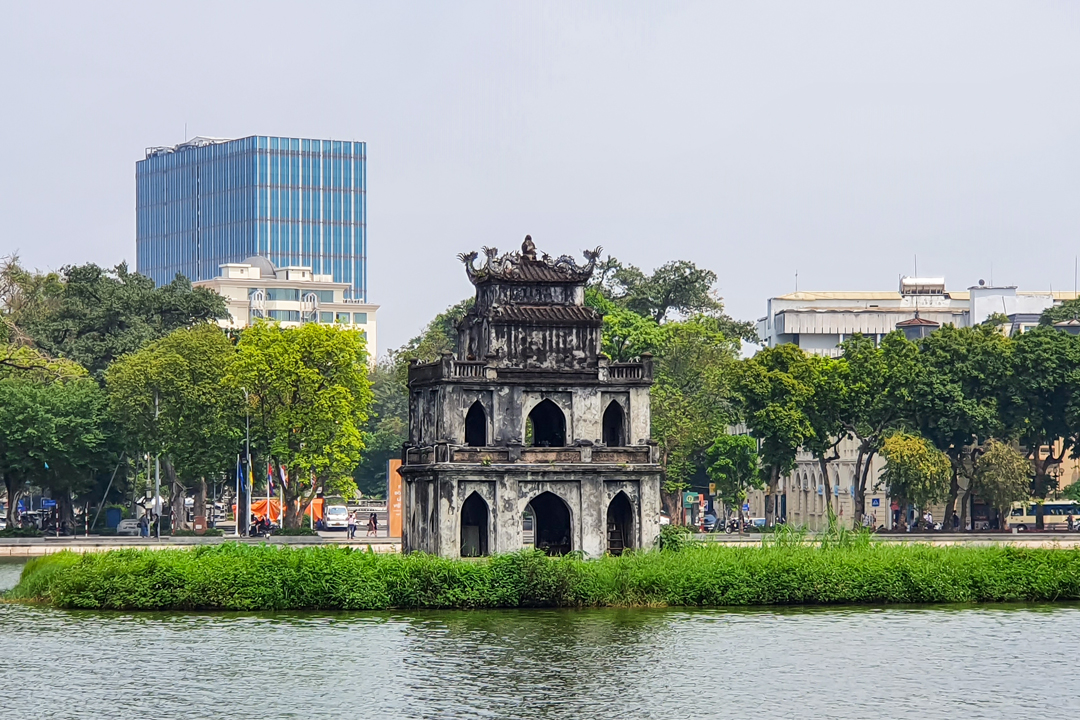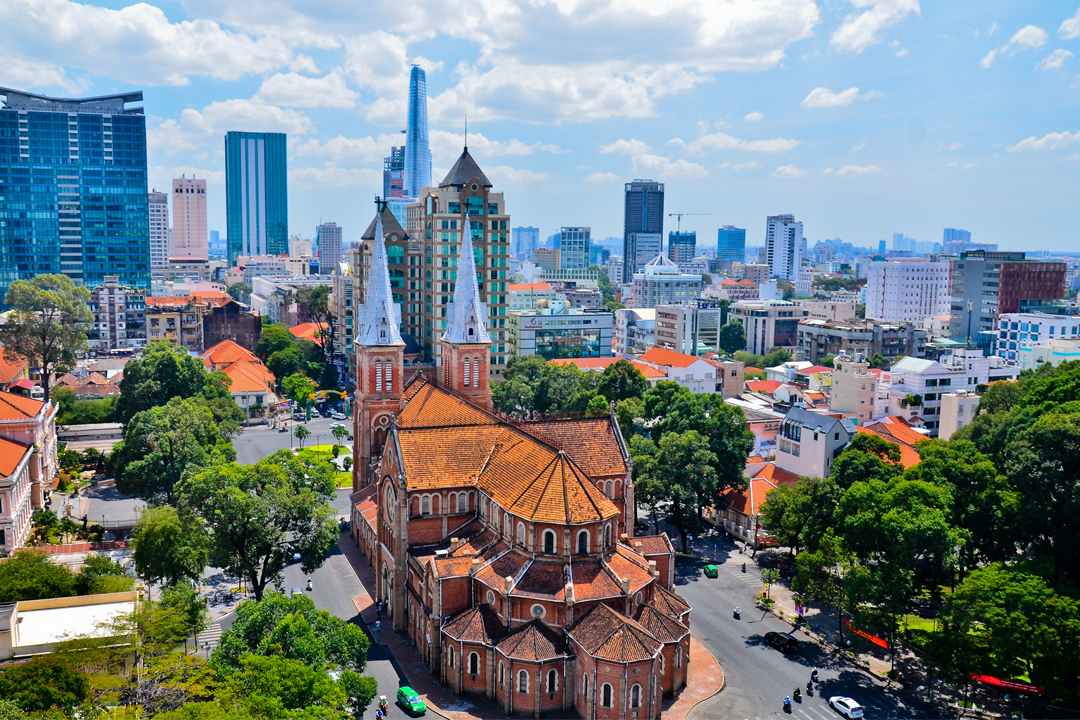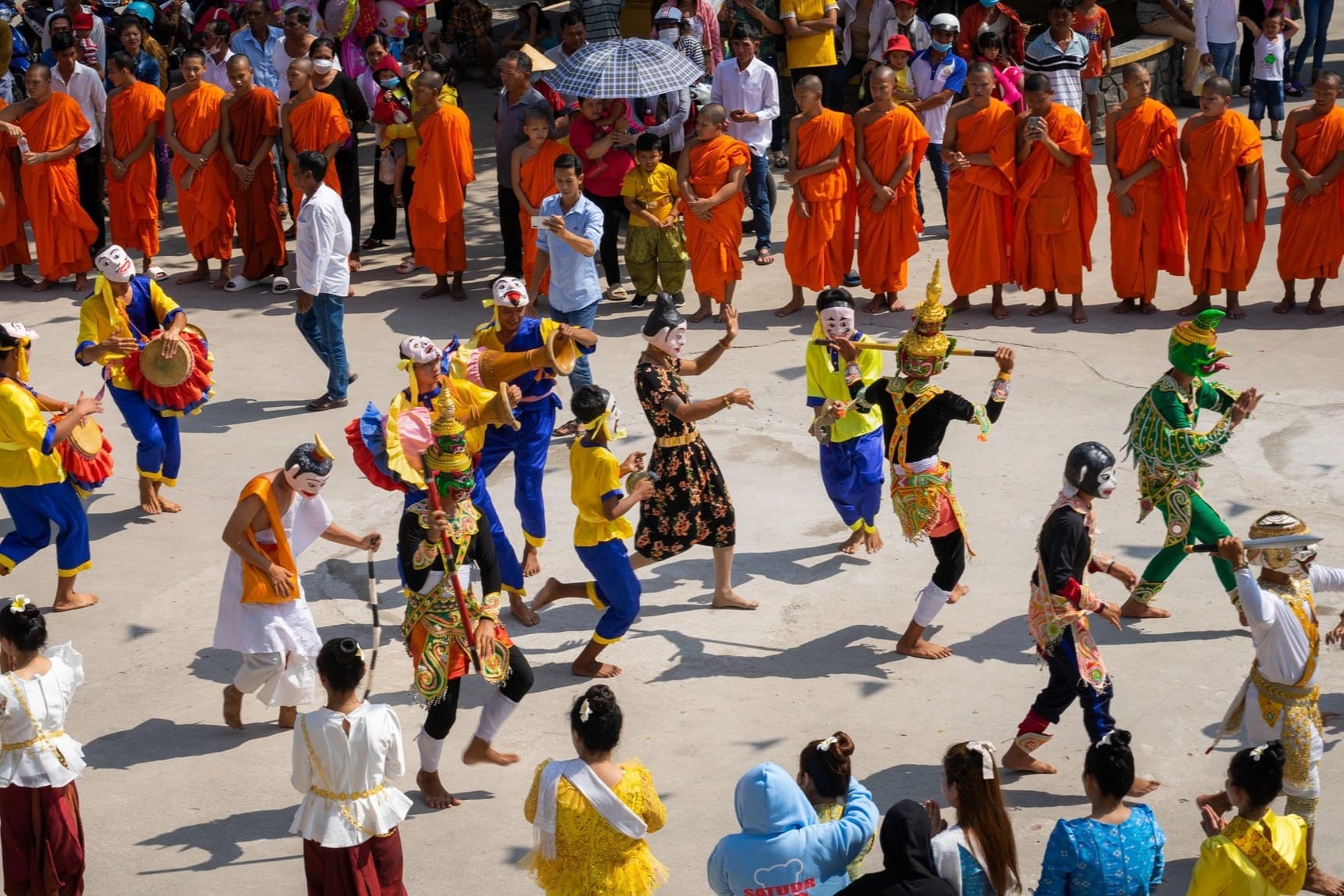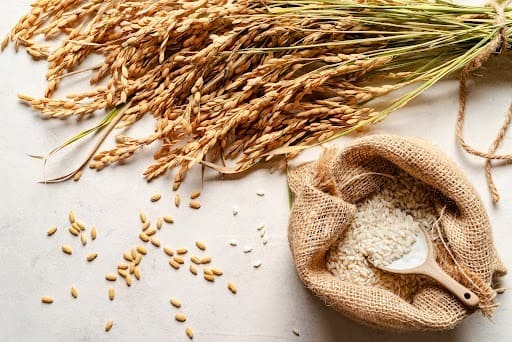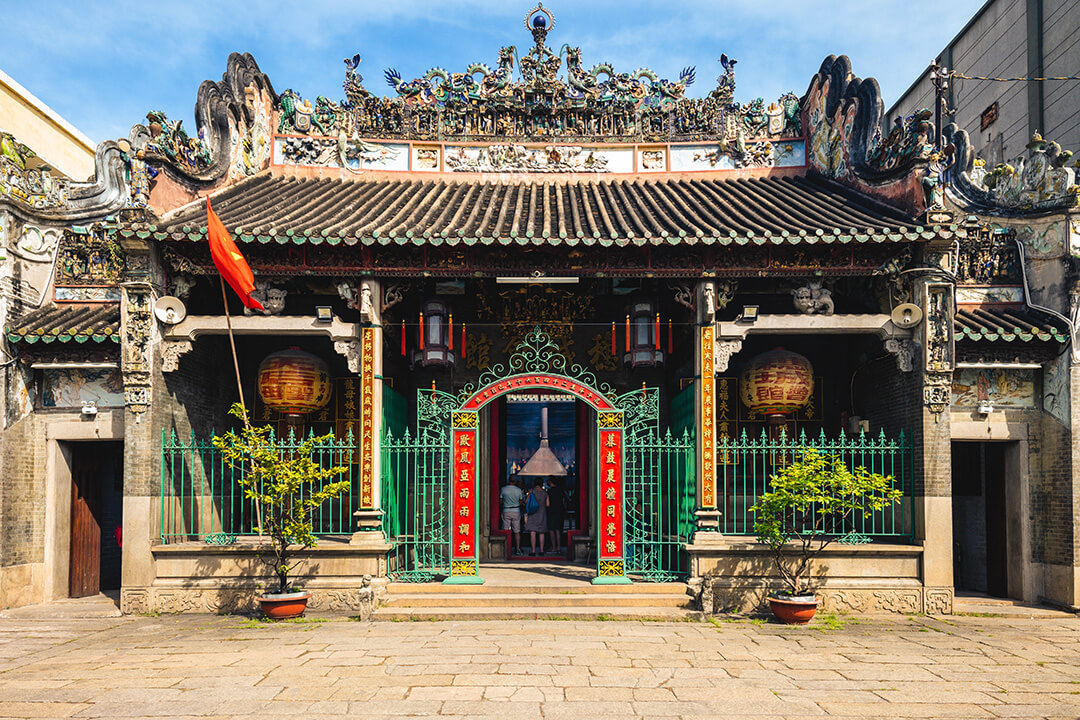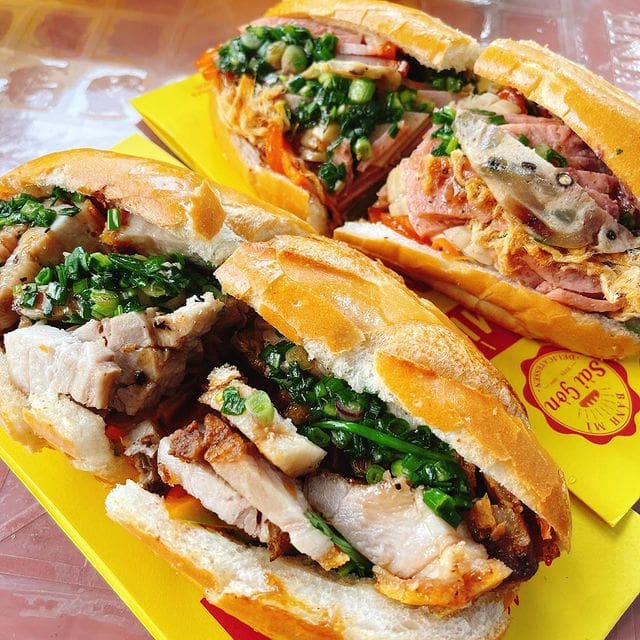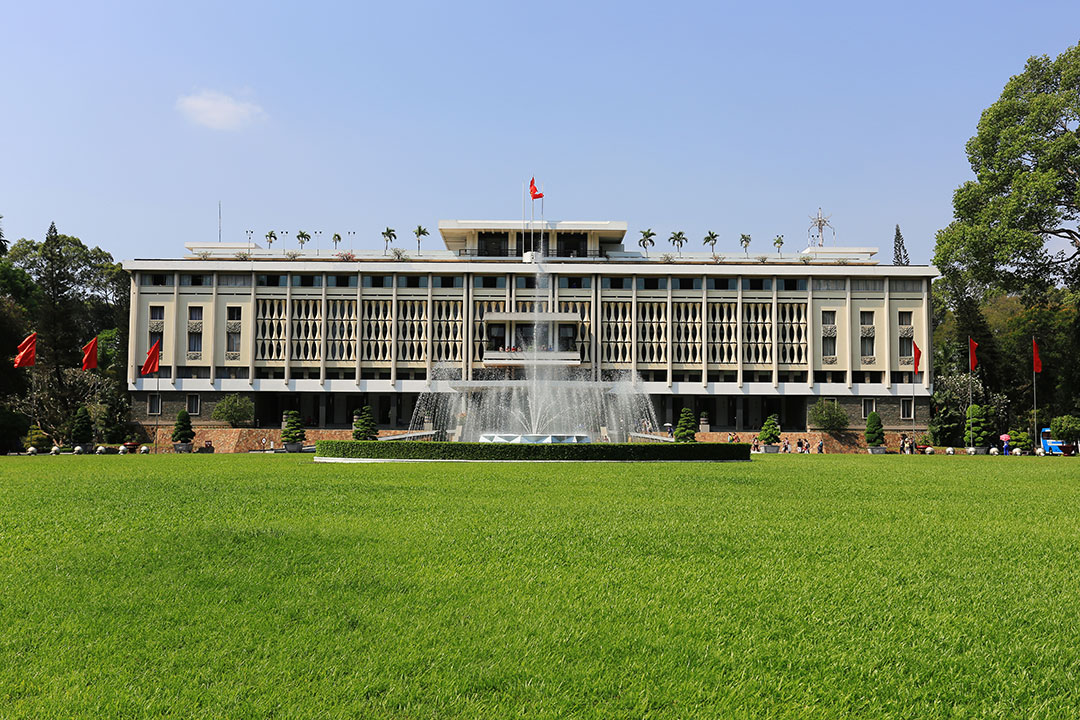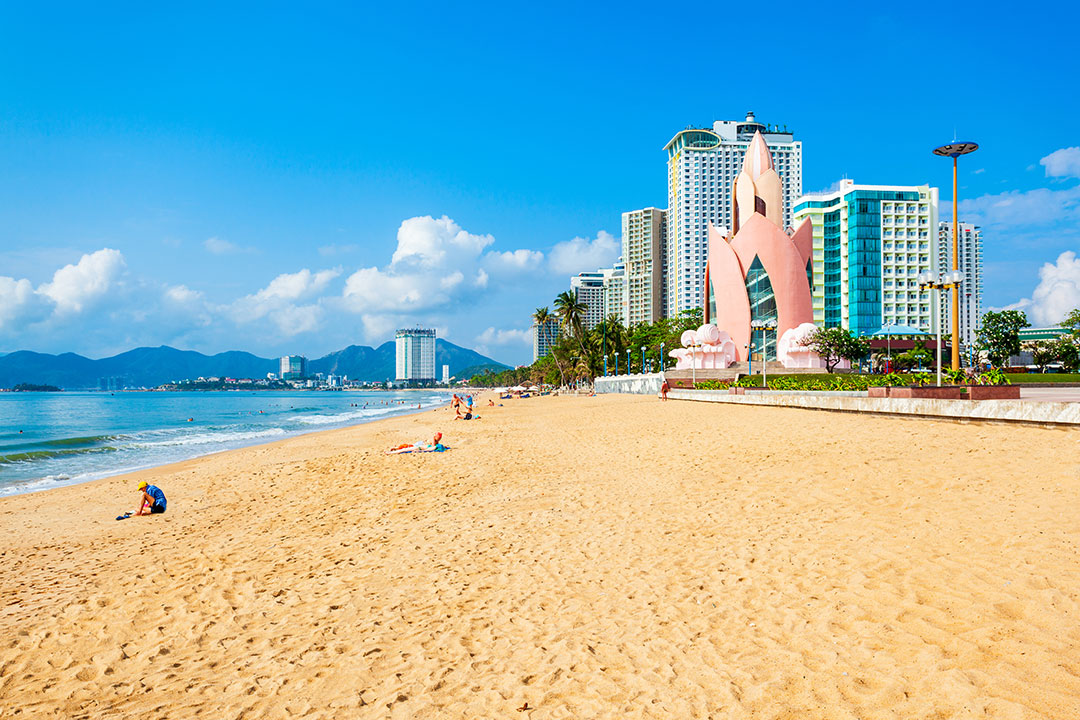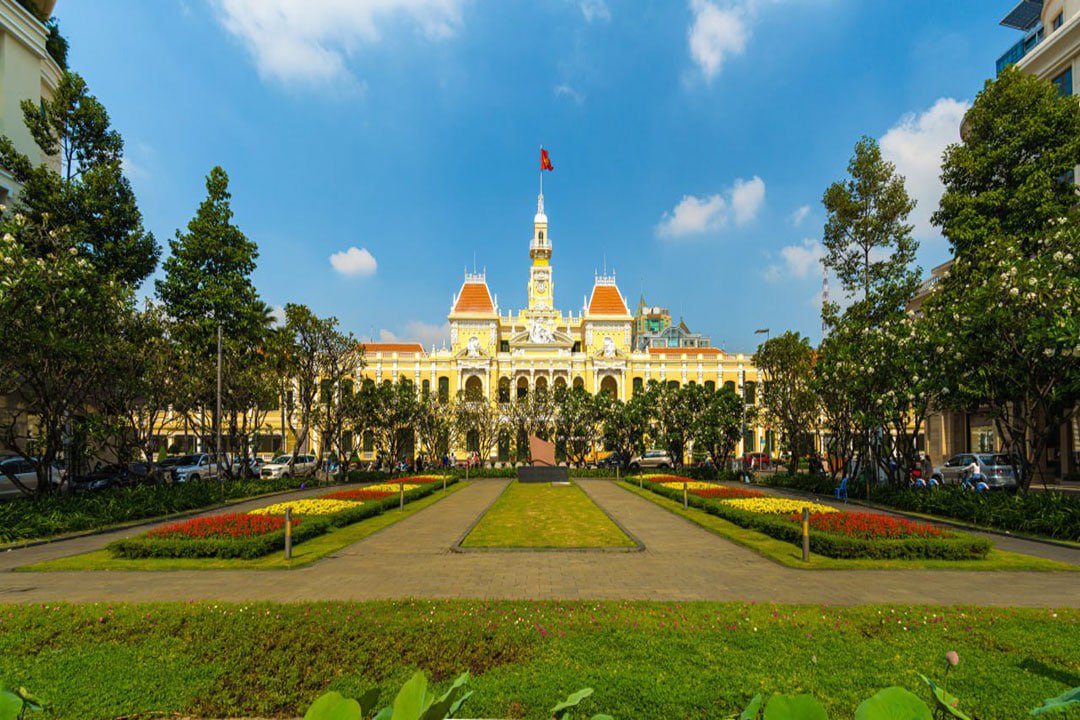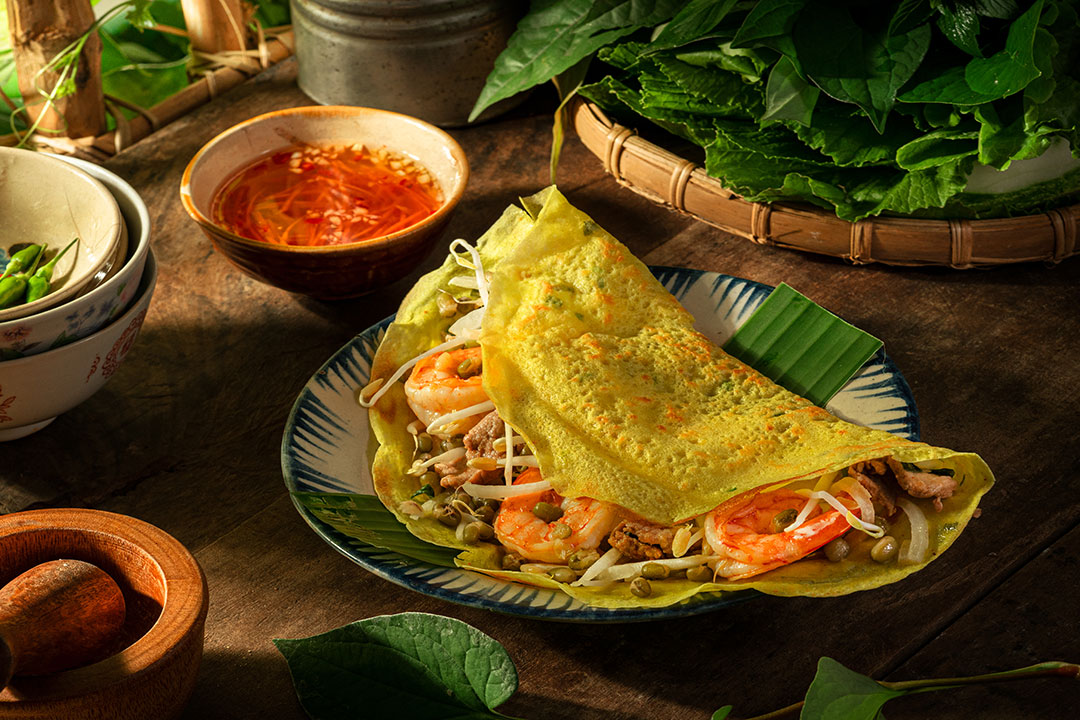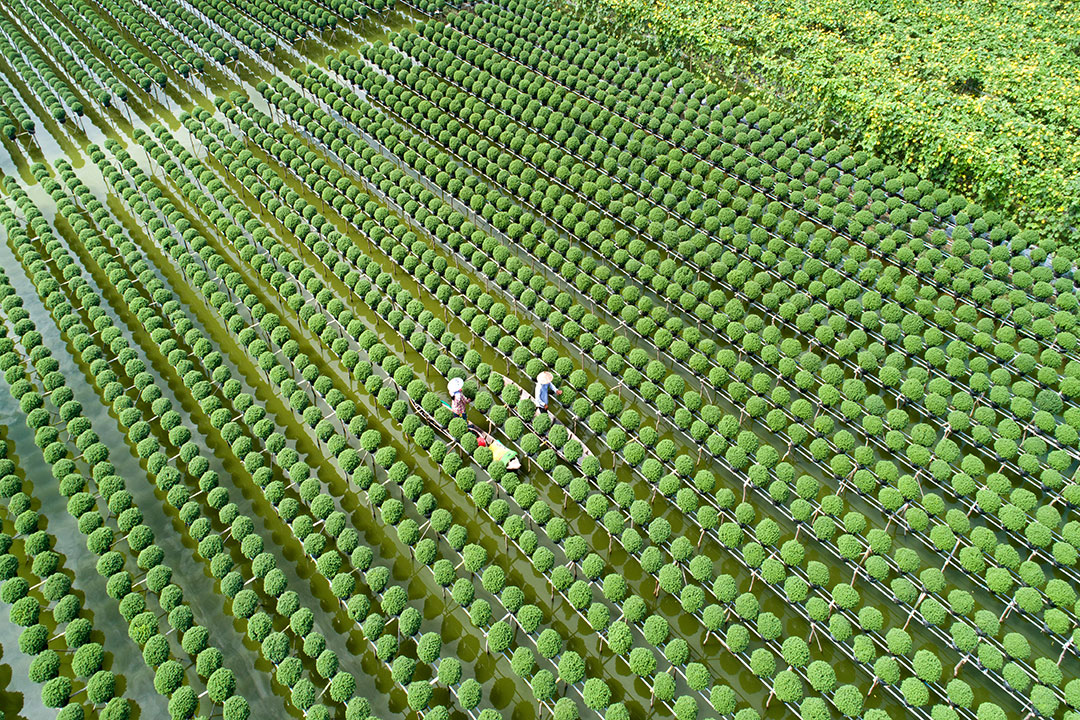Saigon's Chinatown (Cho Lon): Location, Things to Do & Local Food
Saigon's Chinatown is a full-sensory immersion into a world where history breathes and culture thrives on every corner. Known locally as Cho Lon, this sprawling, vibrant district within Ho Chi Minh City is a living testament to the rich heritage of the Chinese community in Vietnam. Escape the glass towers and wander through temples, bustling markets, and kitchens serving age-old recipes. It's a place where the scent of medicinal herbs mingles with the sizzle of woks and the bright red of lanterns paints the streets. This GTrip guide is your ultimate key to unlocking all the secrets of Cho Lon, from its spiritual heart and historical roots to its unmissable culinary delights. Prepare to explore one of Ho Chi Minh City's most authentic and captivating neighborhoods.
Overview of Saigon's Chinatown
Location: Primarily located in former District 5 and District 6, with its heart in the Cho Lon area
Chinatown in Ho Chi Minh City is rich in heritage, featuring numerous national historical relics, including traditional guild halls, temples, and shrines that are linked to the Chinese community. It also preserves intangible cultural heritages like traditional festivals and folk performances, reflecting the deep-rooted Chinese influence in the area.
Besides its cultural significance, Cho Lon is a bustling commercial center with famous streets like Hai Thuong Lan Ong, Hong Bang, and Tran Hung Dao, where old houses and traditional markets coexist with modern shops. The ward is renowned for its authentic Chinese-Vietnamese cuisine, colorful bilingual signage, and lively streets that attract both locals and tourists. It remains a place where the Chinese community's traditions blend with the vitality of a modern city, continuing to play an important role in the social and economic life of Ho Chi Minh City.

Cho Lon is the vibrant heart of Saigon’s Chinatown, with bustling markets and authentic cuisine, transforming it into a lively cultural and commercial hub
How to get to China Town Saigon
Reaching Saigon's Chinatown from the central tourist hub is a straightforward journey. With a variety of options available, you can choose the one that best suits your budget and sense of adventure.
- Ride-hailing apps (Grab/XanhSM): This is the most convenient and popular method. A car or motorbike ride from the city center typically takes 15 - 25 minutes, depending on traffic. This option offers door-to-door service, eliminating any navigational stress.
- Public bus: For the budget-conscious traveler, public buses are an excellent choice. Bus routes connect all areas, and you can use a route-planning app to find the right one heading to "Cho Lon" or "Binh Tay Market". It's incredibly cheap and offers a glimpse into local daily life.
- Cyclo: For a more leisurely and scenic journey, hire a cyclo. This three-wheeled bicycle taxi provides an open-air tour of the city streets on your way to Chinatown. Always agree on the price before you start your journey to ensure a smooth experience.
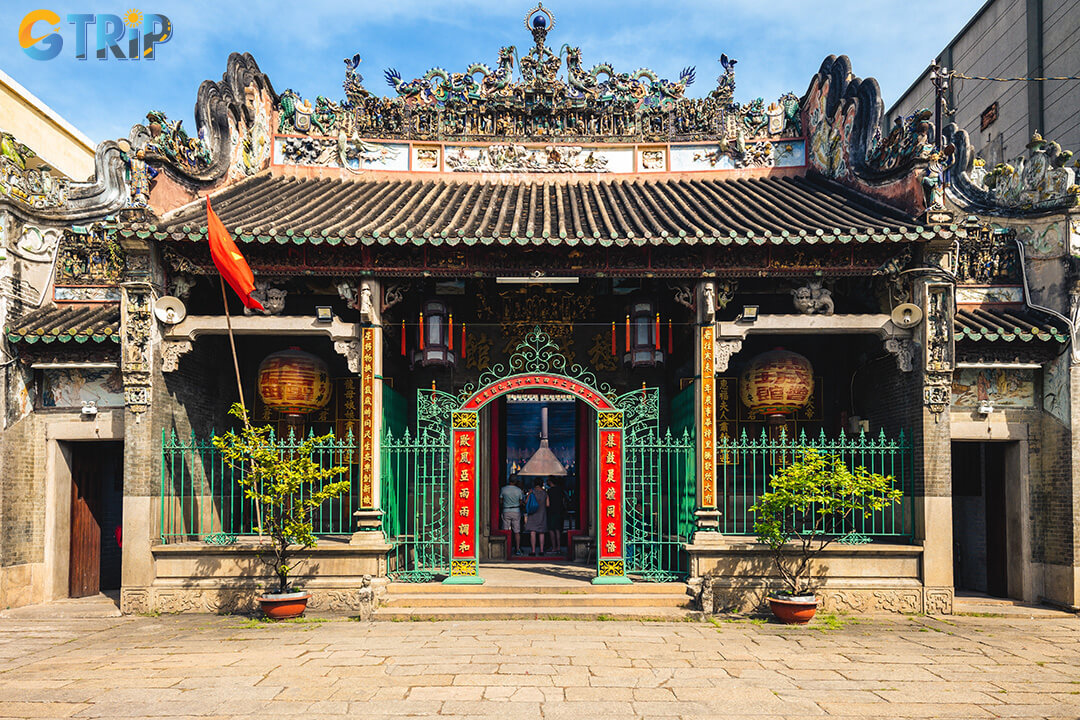
Getting to Saigon’s Chinatown is easy, with options ranging from quick Grab rides to budget-friendly buses or a leisurely cyclo for a scenic, local experience
History of Cho Lon's formation
Cho Lon, also known as Saigon’s Chinatown, has a rich history dating back to the late 17th and early 18th centuries. It was originally established by Chinese immigrants who fled political turmoil in China, including the Tay Son rebellion and the Qing Dynasty's rise. These immigrants founded Minh Huong Village and later expanded to form a bustling market called Cho Lon, which means “Big Market” in Vietnamese. It became a distinct city, separate from Saigon, populated mainly by the Hoa community (Chinese-Vietnamese), and thriving as a commercial and cultural center. The area was known for its vibrant markets, temples, and a unique blend of Chinese and Vietnamese traditions.
In 1865, Cho Lon was officially established as a city, distinct from Saigon. However, by the 1930s, urban growth led to the merger of Cho Lon and Saigon, creating the Saigon-Cholon metropolitan area. This merger marked a significant integration of both cities, although Cho Lon retained its unique identity as the traditional Chinese quarter. Today, while the name Cho Lon no longer exists as an official administrative unit, it remains widely recognized as the cultural and historical Chinatown of Ho Chi Minh City. It continues to reflect centuries of Chinese influence and community life.

Cho Lon began as a Chinese immigrant settlement in the 17th - 18th centuries and remains today a vibrant hub of trade, culture, and heritage
Things to do in Saigon's Chinatown
Chinatown is a living treasure of culture, architecture, and life, offering visitors many unique experiences that engage all the senses. Every corner reveals something new, from spiritual temples to bustling markets.
Explore architectural and spiritual heritage
The area is densely packed with religious structures featuring distinctive Chinese architectural styles. These are not merely historical relics but active centers of community and worship.
- Thien Hau Pagoda (Tue Thanh Assembly Hall): Located at 710 Nguyen Trai Street, this is one of Saigon's oldest and most revered pagodas. Dedicated to Mazu, the goddess of the sea, its most stunning feature is the intricate ceramic sculptures adorning its roof, depicting vibrant scenes from Chinese folklore. The air inside is thick with incense from giant, spiraling cones that burn for weeks.
- Ha Chuong Assembly Hall: A short walk away at 802 Nguyen Trai Street, this temple is a breathtaking masterpiece of Fujian-style architecture. Every surface is alive with elaborate wood, stone, and tile carvings, making it a feast for the eyes and a photographer's dream.
- Nhi Phu Assembly Hall (Ong Bon Pagoda): Found at 264 Hai Thuong Lan Ong Street, this ancient pagoda is unique as it is the only place in Saigon that worships Ong Bon, a guardian deity of the Fujian community. Its history and dedicated following make it a vital cultural linchpin.
- Tam Son Assembly Hall: Tucked away at 118D Trieu Quang Phuc Street, this hall, built by the Fujian community, holds a special spiritual significance. It is famously known as a sanctuary where childless couples come to pray for fertility to the goddess Kim Hoa Thanh Mau.

Saigon’s Chinatown is home to centuries-old pagodas and assembly halls, where ornate Chinese architecture and living traditions of worship
Immerse yourself in the bustling market culture
The markets here are not just places for trade but are the pulsating centers of community life, where commerce, culture, and chaos collide most excitingly.
- Binh Tay Market: The undisputed giant of Chinatown, located at 57A Thap Muoi Street, is Cho Lon's largest wholesale market. Its striking architecture, a blend of Eastern and Western influences, houses a whirlwind of activity. Here, you'll find everything from bulk spices, dried seafood, and exotic fruits to household goods and textiles.
- An Dong Market: Situated at 34 - 36 An Duong Vuong Street, this market is a fashion paradise. As the city's largest wholesale hub for clothing and accessories, its multiple floors are packed with stalls selling garments, fabrics, footwear, and bags. It's the perfect place to witness local fashion trends in the making.
- Soai Kinh Lam Fabric Market: A true fabric wonderland at 465 - 473 Tran Hung Dao Street. This market is a kaleidoscope of color and texture, offering every type of material imaginable, from shimmering silks and brocades to simple cottons and linens.
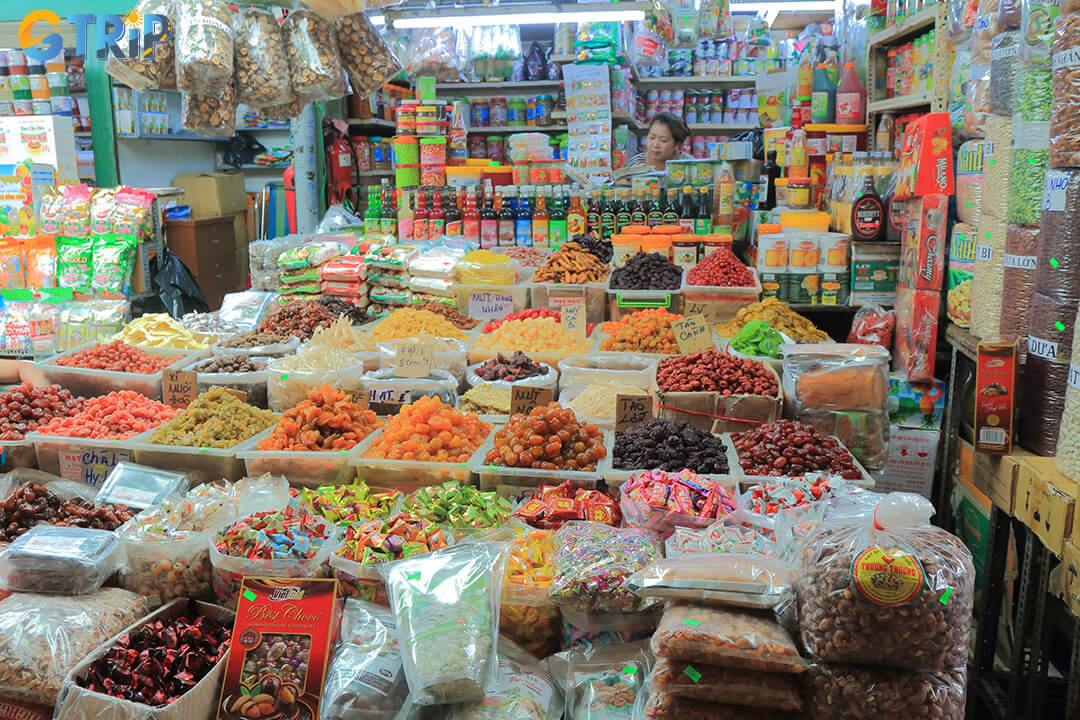
Cho Lon’s bustling markets are vibrant hubs where trade and tradition meet, offering everything from fresh produce and fabrics to fashion and household goods
Stroll through unique streets and alleys
Wandering off the main roads reveals the true character of Chinatown. These specialized streets and hidden alleys offer a glimpse into the traditional lifestyles and crafts that define the neighborhood.
- Luong Nhu Hoc Lantern Street: This street specializes in crafting and selling exquisite handmade lanterns. While charming year-round, it truly comes alive during the Mid-Autumn and Lunar New Year Festivals, when it transforms into a dazzling river of red and gold light, creating a magical atmosphere.
- Hai Thuong Lan Ong traditional medicine street: A walk down this street is a journey for the nose. The air is rich with the earthy, fragrant scent of herbs, roots, and barks spilling from hundreds of traditional Chinese medicine shops. The sight of apothecaries using traditional scales to weigh ingredients is a scene straight from a bygone era.
- Hao Si Phuong alley: Hidden in plain sight at 206 Tran Hung Dao Street, this century-old apartment complex is a vibrant and photogenic gem. Nicknamed "a miniature Hong Kong", its narrow corridors, colorful peeling paint, and laundry-draped balconies offer an intimate portrait of community life.

Chinatown’s hidden streets and alleys reveal its most authentic charm, from glowing lanterns and herbal apothecaries to nostalgic century-old apartments
Savor the distinctive cuisine in Chinatown
A visit to Saigon's Chinatown isn’t complete without a food pilgrimage. This hub of authentic Chinese cuisine blends Cantonese traditions with Vietnamese flavors, from delicate dim sum to rich noodle soups and sweet desserts, a true taste adventure.
Savory dishes and main courses
The savory food scene in Chinatown is robust, flavorful, and deeply rooted in tradition. These are the dishes that have defined the neighborhood's culinary identity for generations.
- Dimsum: This quintessential Cantonese experience involves a flurry of small, shareable plates. Baoz Dimsum at 82 - 88 Nguyen Tri Phuong Street is a standout recommendation for savoring a wide variety of delicious steamed dumplings, classic shumai (pork and shrimp) and pillowy char siu bao (BBQ pork buns).
- Dong Nguyen chicken rice: A legendary establishment serving Hainanese chicken rice. The secret lies in their use of free-range chicken, which results in exceptionally firm, flavorful meat and perfectly crispy skin, served with fragrant, chicken-fat-infused rice. Find it at 801 Nguyen Trai Street.
- Dan Ich fish hotpot: For a truly traditional experience, this long-standing restaurant is a must-visit. They are famous for using a charcoal-based stove, which imparts a unique, subtle smokiness to the rich and flavorful fish broth. Head to 99 Chau Van Liem Street to try it.
- Braised duck noodle soup (Mi vit tiem): This is a deeply comforting and complex dish. A whole duck leg is braised for hours in a dark, rich broth infused with medicinal herbs until it's fall-off-the-bone tender. It's served with springy egg noodles, creating a perfect balance of flavors and textures.
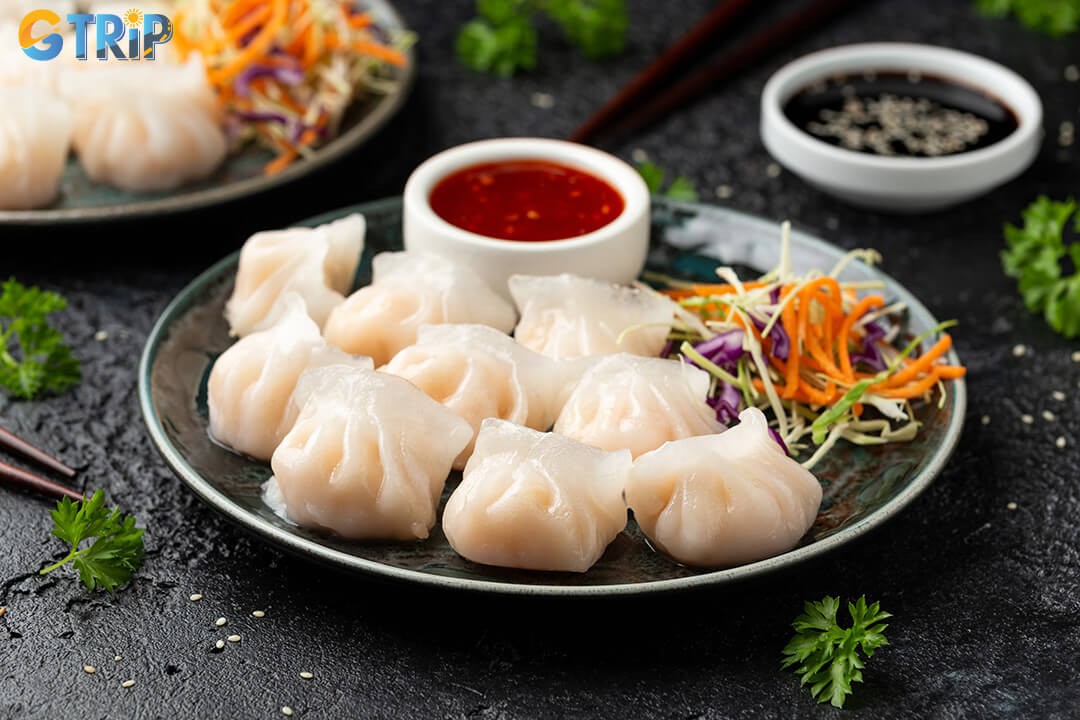
Chinatown’s food scene is a flavorful journey through timeless dishes, from dim sum and chicken rice to smoky hotpot and herbal duck noodles
Sweets and desserts
Chinese desserts, known as che, are often lighter and less sweet than their Western counterparts, prized for their refreshing and sometimes healthy properties.
- Chinese sweet soup (Che): The selection of sweet soups here is vast and fascinating. You must try unique offerings like hot ga tra, a surprising yet delicious blend of sweet herbal tea with a poached egg, and sam bo luong, a cooling concoction of dried longan, lotus seeds, and seaweed. A legendary spot to try these is Che Ha Ky at 138 Chau Van Liem Street.
- Cade sticky rice (Xoi cade): This is a fragrant and satisfying snack beloved by locals. Warm, glutinous sticky rice is generously topped with a golden, velvety cade sauce, a rich custard made from eggs, coconut milk, and a hint of durian. It's a truly unique flavor of Chinatown.
- Kem ca (Fish-shaped ice cream): This is a fun and visually appealing dessert, especially popular with the younger crowd. This isn't fish-flavoured ice cream, rather, it's soft-serve ice cream served in a warm, fish-shaped cake, similar to Japanese taiyaki. Located on 9A Nguyen An Street, right in the lantern street area, U Pa is a well-known spot.
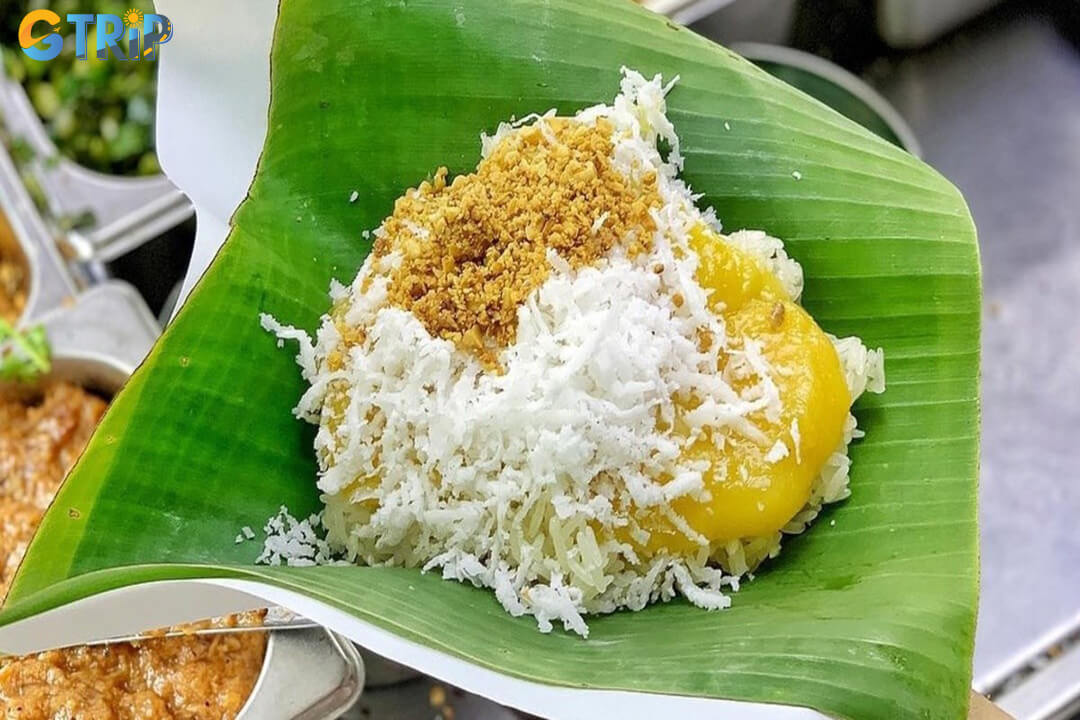
Chinatown’s desserts bring a sweet finish with refreshing herbal soups, rich sticky rice custard, and playful fish-shaped ice cream
Essential tips for visiting Saigon's Chinatown
To make the most of your adventure in this vibrant neighborhood, keep these practical and cultural tips in mind. A little preparation goes a long way in ensuring a respectful and enjoyable visit.
- Best time to visit: Chinatown is at its absolute most beautiful and lively during major festivals like Lunar New Year (Tet), the Lantern Festival (15th day of the 1st lunar month), and the Mid-Autumn Festival. During these times, the streets are splendidly decorated with lanterns, and the air is filled with festive energy and lion dances.
- Dress respectfully: When visiting temples, pagodas, and assembly halls, you should wear modest clothing. As these are active places of worship, covering your shoulders and knees is a sign of respect for the local culture and devotees.
- Bring cash: While larger restaurants and shops may accept credit cards, cash is essential for eating at street food stalls, buying drinks, and shopping in the traditional markets. Having small denominations will make transactions much smoother.
- Cultural notes: Be mindful of local customs. The Chinese community has certain cultural beliefs; for example, it's considered poor form to be the first customer of the day if you don't intend to buy anything. Gifts like watches or shoes are often avoided due to phonetic similarities with unlucky words. In terms of numbers, 4 is considered unlucky, while 8 is very lucky.

Make the most of your Chinatown visit with tips on timing, attire, cash, and cultural etiquette for a smooth and respectful experience
Saigon's Chinatown is far more than just a sightseeing spot, it is a profound cultural and culinary journey. It’s a place where you can witness centuries of history play out in the architecture of a temple, taste the heritage in a bowl of noodle soup, and feel the powerful sense of community in a bustling market alley. A trip to Ho Chi Minh City is truly incomplete without dedicating time to get lost in the vibrant, chaotic, and endlessly fascinating streets of Cho Lon. Explore Cho Lon on Ho Chi Minh City tours with insider tips and must-see experiences from GTrip - Vietnam Travel Agency. It’s an experience that rewards the curious traveler with unforgettable memories and a deeper understanding of the city’s diverse soul. So, lace up your most comfortable shoes, bring an adventurous appetite, and dive headfirst into the magic of Saigon's Chinatown.

